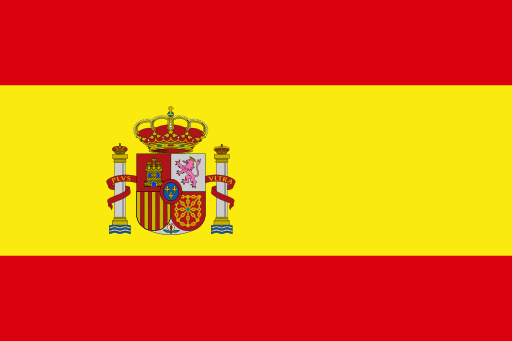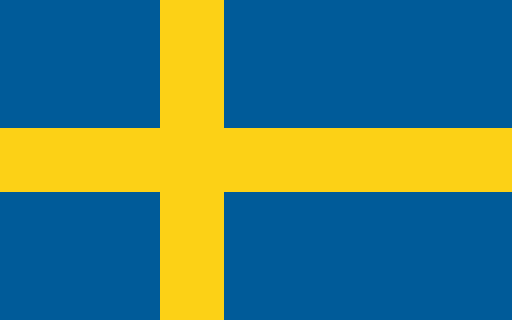|
|
 |
Articles
|
|
Rugby codification
|
|
|
Carlton
http://www.new-dating.com/search.php
|
THE CODIFICATION OF RUGBY
With so many different forms of football being played in England's schools, however, it was by no means certain that the Rugby code would prevail. Former pupils of Rugby school were the most evangelical advocates of their game and in 1839 Old Rugbeian Arthur Pell founded a club at Cambridge University and challenged a group of Old Etonians to a game of football. The Etonians, however, were astounded at the Rugbeians' use of their hands and so it was decided that representatives from the major public schools of Eton, Rugby, Harrow, Marlborough, Westminster and Shrewsbury would codify what became known as the "Cambridge Rules" in 1848. Outside the universities and schools, other clubs were also beginning to form. Blackheath and Richmond played their first game under "Harrow Rules" in 1861, changing the next year to "Rugby Rules" after an influx of Old Rugbeians.
The ambiguous situation regarding rules continued until 1863, when supporters of the "Kicking Codes" played at Charterhouse, Eton, Westminster and Harrow met Blackheath and the other supporters of the "Carrying Codes" popular at Cheltenham, Marlborough and Rugby at the Freemasons' Tavern in London to thrash out a compromise. All went well at first, with the Kickers accepting the Carriers' insistence on retaining the customs of "hacking" (kicking an opponent's shins, a practice which was eventually outlawed in 1866) and "tripping". Things went awry when the Kickers decided to refer the compromise to Cambridge University, who refused to countenance hacking, tripping or the key Blackheath condition, "that a player may be entitled to run with the ball towards his adversaries' goal if he makes a fair catch." Blackheath walked out, leading to the final split that created the two separate codes of Association Football (soccer) and Rugby Football. Even then, several clubs remained confused as to which code they should be playing, with the situation at Sale in 1870, where the club played rugby and Association Football on alternate weekends, by no means unique.
Rugby spread rapidly from that date, initially by the efforts of old boys of Rugby and Marlborough Schools, and in 1871 the Rugby Football Union was formed at a meeting convened at the Pall Mall Restaurant by Edwin Ash of Richmond. Three Rugbeians headed an organization of 20 clubs of which Richmond, Harlequins and Blackheath remain the best known. (Wasps would have been there had its delegate managed to drag himself out of the pub!) An Old Rugbeian and member of the now defunct Wimbledon Hornets club, Leonard Maton, codified the Laws of Rugby Football in 1871, in which hacking and tripping were expressly forbidden under law 57. The Varsity Match was first played in 1872, and the Hospital's Cup was inaugurated in 1875 as the English game set in place institutions that are alive and well in 1997.
Yet England was not the only country where the game had taken root. North of the Border, Merchiston Castle School and the old boys of Edinburgh Academy first played the world's oldest continual fixture in 1858. While in Ireland the Old Rugbeian R.H. Scott founded a club at Trinity College Dublin in 1854, and in Wales the game took root when Reverend Rowland Williams became deputy-headmaster of St David's College, Lampeter, in 1850. Against a backdrop of rapid expansion at club level, the game took a mighty international leap forward in 1871 when an England team captained by Blackheath's Frederick Stokes accepted a challenge issued in The Scotsman newspaper by a Scotland side led by Edinburgh Academical F.J. Moncrieff. England were beaten by a goal and a try, to a try in front of 4,000 spectators at Raeburn Place. Twelve years later, when England played Wales at St Helen's, they started the Five Nations and put in place a structure that was to maintain the European game for the next century.
The rapid expansion of the game in Britain was to bring its own problems, however. When the number of players dropped from 20 to 15 in 1876, the nature of the game changed completely from a forward trial of strength to a genuine running code. The effect was dramatic, with the game taking off in the north of England, where it was at least as popular as Association Football. In 1879 a crowd of over 7,000 gathered to watch Wigan win the West Lancashire Cup, a figure far in excess of the number of spectators who watched the England versus Scotland 11-man game that year. Fierce inter-town rivalries quickly developed and cup rugby became one of the most emotive issues in the north. With such intense competition, standards rose more quickly in the north, and the southern gentlemen began to suspect (rightly in many cases) that money was changing hands. In fact, taking up a job as a barman in another rugby-playing town became something of a standing joke in those years, so accepted was it that it was a back-door means of paying players.
As the 1870s drew to a close, the social composition of the game had begun to change irrevocably, and throughout the 1880s it became painfully clear that there was a wide rift between the gentlemen Corinthians of London, Ireland and Scotland, and the working men who made up the bulk of the playing population in Wales, the West Country and the Northern counties of England. The rise of professional Association Football meant that the rival code was beginning to attract huge crowds, and it became apparent that rugby would eventually fall behind in popularity. With the northern clubs also dominating rugby in England and closet professionalism rife in Yorkshire and Lancashire, matters began to come to a head in 1888, when the Halifax player J.P. Clowes was designated a professional after accepting £15 to buy equipment before departing on a nine-month tour of Australia and New Zealand. Indeed, the whole of the Anglo-Welsh team which toured Australia and New Zealand under the leadership of R.L Seddon and A.E. Stoddart was forced to sign an affidavit to the effect that they had received no money for touring (although it must also be noted that more than two thirds of the party were from clubs such as Batley, Dewsbury, Swinton and Rochdale Hornets who were among the founders of what became the Rugby League).
THE GREAT SPLIT
From 1888 onwards, the northern clubs mounted a campaign that would allow them to pay a "broken-time" allowance for money lost while playing rugby. At that time, the bulk of the England team were from Yorkshire and Lancashire sides, while such was the north's domestic dominance that Yorkshire won the County Championship trophy every year bar one between its inauguration in 1889 and the Great Split of 1895, with Lancashire winning in the one year Yorkshire failed to do so. The issue finally became unavoidable, and in 1893 a representative of the Yorkshire County, Mr. J.A. Miller, argued: "that players be allowed compensation for bona fide loss of time". With RFU secretary G.R. Rowland Hill and president R. Whaley arguing strenuously against the broken-time proposal, it was rejected by 146 votes amid scenes of enormous rancor.
The northern clubs determined to stay within the RFU and it was only when in 1895 the Union president R. Cail significantly tightened the laws concerning professionalism that the northerners decided to act. Convinced that they could never get fair treatment from a southern dominated RFU (120 votes of that 1893 majority had been collected ahead of time as proxy votes), twenty of the top northern clubs met in the George Hotel in Huddersfield on 28 August 1895 and decided to form a Northern Union, which later became the Rugby League.
The split precipitated a steep decline in English fortunes and over the next ten years the number of clubs playing Rugby Union halved. So decimated was the national side that the Welsh began to dominate completely and it was not until 1910 that England next won the International Championship. And the matter was not finished there. In 1897 another thorny problem arose when the Welsh Rugby Union honoured its star player, Newport's Arthur "Monkey" Gould, with a benefit game, which was clearly against the spirit of the professional regulations put in place in 1895. Despite fierce opposition from the Yorkshire delegates, Rowland Hill and the RFU, ever mindful of the damage wrought by the split of 1895, agreed to allow Gould to play against English clubs and to continue representing Wales. A disgusted Scotland was not so accommodating, however, and it was only in 1899 that Scotland and Wales resumed playing contact.
SPREADING THE GOSPEL
Not surprisingly, the vicious in-fighting of the 1890s also coincided with the first signs that Britain was not the centre of the rugby world any more. The once dominant British Isles touring sides, who lost only four matches in their first four overseas tours up to and including the visit to Australia in 1899, were beginning to find the opposition a tougher proposition. Not that that should have come as any great surprise. When England played Scotland for the first time in 1871, the game had already begun to spread throughout the Empire at a prodigious rate and it was only a matter of time before the Colonies achieved parity.
The first nation outside Britain to embrace rugby was Australia, when the Sydney University club was formed in 1863, and by 1872 there were 13 clubs in Sydney. As in Britain, there was cross-code competition with the 1877 AGM eventually voting down a motion to "abolish scrimmages and running with the ball", at which stage the popularity of the sport exploded and by 1880 there were 41 clubs in Sydney as well as a burgeoning game in Brisbane. Despite developing rapidly in New South Wales and Queensland, with the latter one of only three sides to defeat the Reverend Matthew Mullineaux's British Lions in 1899, the game was always in competition with Australian Rules Football. From 1907, following a visit from the New Zealand Rugby League team, Union came under threat from League. Dr Moran's Australian Rugby Union side visited to Britain less than a year later, but on their return left en bloc to play Rugby League, a situation made even worse in 1914 when the Rugby Union authorities decided it was unpatriotic to play rugby while thousands of young Australian men were being sent overseas to fight in the First World War. With only one alternative, players switched in huge numbers to League, and although Union in Sydney gradually recovered, the effect upon Queensland can be gauged by the fact that no Union was played in the state again until the 1930s.
Across the Tasman Sea, New Zealand was introduced to the game by Charles John Munro on his return from schooling in north London in 1870, and took to it rapidly as it displaced the mixture of Association Football, Victorian Football (later to become Australian Rules Football) and an amalgam of carrying codes then in vogue. With the Maoris also displaying a natural aptitude for the game, many saw rugby as the social glue of New Zealand. (Indeed, some commentators of the time thought that it brought an end to the bloodshed overland that occurred between Maoris and settlers in the late 1860s.) By the time that A.E. Stoddart's British team arrived in 1888, the New Zealanders had improved to such an extent that both Auckland and Taranaki inflicted on the British their only two defeats of a monumental 35-match tour.
Suitably buoyed with their progress, the New Zealanders dispatched a Maori side to tour Europe in 1888-89. The subsequent success of that tour forever etched the game of rugby into the Kiwi psyche. The tourists played 74 matches in all, winning 49 of them, this despite sometimes playing up to four matches in a week. The tour produced some legendary players such as three-quarter Davy Gage, forward Tom Ellison and half-back Paddy Keogh. When in 1905 another tour returned (called "The Originals"), this time led by Dave Gallaher, only one game was lost, and that to Wales by a try that was so hotly disputed at the time that it remains a talking point in New Zealand rugby circles even today. By the time New Zealand completed a third tour of Britain in 1924, during which they had gone unbeaten, thus earning themselves the epithet "The Invincibles", they had proved themselves the strongest rugby side in the world.
At the same time that rugby was expanding in Australasia, a third Southern Hemisphere nation was developing a taste for the game. Rugby was introduced to South Africa as early as 1858 by the Reverend "Gog" Ogilvie, who had played the game in Buenos Aires. In 1862 the first recorded match was played between civilians and military in Cape Town, and although Rugby had to compete against "Winchester Football" and the other kicking codes, the preference of Governor Cecil Rhodes for Rugby's rules soon settled the debate. Indeed, it was Rhodes' decision in 1891 to invite a British side led by Scotsman Bill Maclagan that saw South Africa enter the international game. Although the visitors won all of the games on that tour, conceding only one try in the process, enthusiasm for rugby became widespread in Southern Africa. By the time the British came back in 1896 they were to lose a Test, and when Mark Morrison led the third tour in 1903, they lost the series. When war broke out in 1914, Tom Smyth's 1910 Lions had been defeated on two tours of Britain and Ireland, in 1906 and 1912, South Africa were beaten in just one Test.
Elsewhere in the world, Rugby was beginning to take root. In 1872 the first French club was formed at Le Havre. The game also began to spread through North America where, after five years in the universities the first cross-border game took place when Harvard University played McGill University from Montreal in 1874. That year also marked the first recorded instance of the game being played in Japan when British sailors staged a game in Yokohama. Throughout the British Empire, the rugby gospel was spread by troops, and by the time of the First World War in 1914, the game was established worldwide as a winter ball sport second only in popularity to soccer. They may not have ever heard of William Webb Ellis in Buenos Aires, Bucharest, Calcutta or Nandi, but they knew a good idea when they saw one.
|
Carlton
http://www.new-dating.com/search.php
|
|
|






